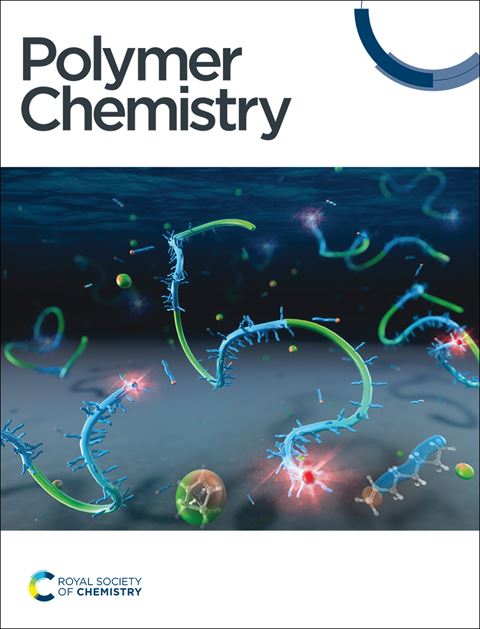Covalent Design of Ionogels: Bridging with Hydrogels and Covalent Adaptable Networks
IF 4.1
2区 化学
Q2 POLYMER SCIENCE
引用次数: 0
Abstract
Ionogels are conductive soft matter with ionic liquids as conductive media, exhibiting significant potential as multifunctional materials. Over the past two decades, ionogels have been developed for applications in sensors, actuators, supercapacitors, lithium-ion batteries, adhesives, antifouling coatings, nanotriboelectric generators, thermoelectric devices, etc. To achieve recyclability that is advantageous for various applications, dissociative supramolecular interactions—e.g. electrostatic interactions, hydrogen bonds and - stacking—have garnered significant attention in the crosslinking design of ionogels. High-strength ionogels utilizing dissociative supramolecular interactions as a crosslinking mechanism have been synthesized. However, due to the inherently low bond energy and high dynamics of dissociative supramolecular crosslinking, issues such as low thermal stability and insufficient solvent resistance arise, limiting the broader applications of ionogels. To address these challenges, the network structure can be precisely designed, and reversible covalent bonds can be introduced as a crosslinking mechanism to mitigate the trade-off between material durability and dynamic behavior. Several studies provide insights into realizing this approach. For instance, hydrogels, which are also classified as soft materials, can enhance both mechanical strength and deformability by incorporating topological network structures based on organic covalent bonds. Similarly, covalent adaptable networks (CANs), a class of dynamic materials, achieve high thermal stability, solvent resistance, and recyclability by utilizing densely reversible covalent bonds. Hence, we chiefly focus on the critical roles of designing the organic polymer network structures and utilizing reversible covalent bonding to enhance key physical properties of ionogels, including mechanical strength, electrical conductivity, and processability. Last but not least, we discuss the current challenges associated with the design and application of ionogels, while also anticipating potential strategies that leverage the superior designs from materials such as hydrogels and CANs to develop innovative ionogels.求助全文
约1分钟内获得全文
求助全文
来源期刊

Polymer Chemistry
POLYMER SCIENCE-
CiteScore
8.60
自引率
8.70%
发文量
535
审稿时长
1.7 months
期刊介绍:
Polymer Chemistry welcomes submissions in all areas of polymer science that have a strong focus on macromolecular chemistry. Manuscripts may cover a broad range of fields, yet no direct application focus is required.
 求助内容:
求助内容: 应助结果提醒方式:
应助结果提醒方式:


